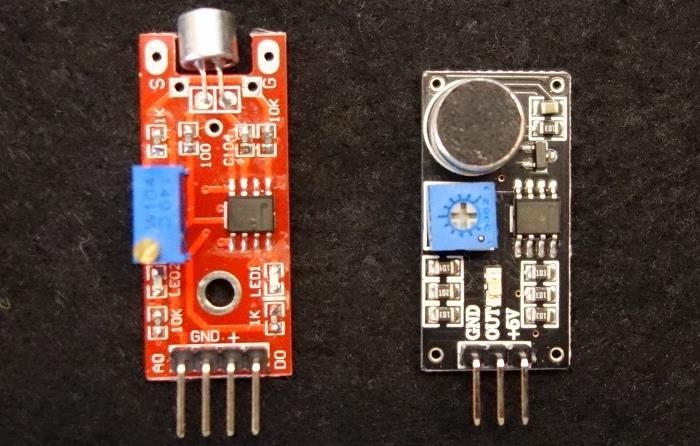Microphone Sound Sensor
The Microphone Sound Sensor is a simple and inexpensive module used to detect sound or vibrations in the environment. It typically consists of a microphone element, an amplifier, and a signal conditioning circuit. The microphone detects sound waves, which are then converted into an electrical signal. This signal is processed and amplified by the onboard circuit to make it suitable for reading by a microcontroller like Arduino.
Microphone sound sensors generally have both analog and digital outputs. The analog output provides a continuous voltage that corresponds to the sound level, allowing for more precise measurements of sound intensity. The digital output is typically a HIGH or LOW signal that activates when the sound level exceeds a certain threshold, making it useful for simple on/off applications like triggering an alarm or turning on lights based on loud noises or sound events.
These sensors are commonly used in projects like sound-based automation, noise detection systems, voice-controlled devices, and audio level monitoring. They are especially popular for DIY projects due to their simplicity and ease of use. However, they are generally sensitive to ambient noise, and calibration may be needed to adjust the threshold for specific applications, such as detecting claps, speech, or other loud sounds.
Microphone sound sensors generally have both analog and digital outputs. The analog output provides a continuous voltage that corresponds to the sound level, allowing for more precise measurements of sound intensity. The digital output is typically a HIGH or LOW signal that activates when the sound level exceeds a certain threshold, making it useful for simple on/off applications like triggering an alarm or turning on lights based on loud noises or sound events.
These sensors are commonly used in projects like sound-based automation, noise detection systems, voice-controlled devices, and audio level monitoring. They are especially popular for DIY projects due to their simplicity and ease of use. However, they are generally sensitive to ambient noise, and calibration may be needed to adjust the threshold for specific applications, such as detecting claps, speech, or other loud sounds.
